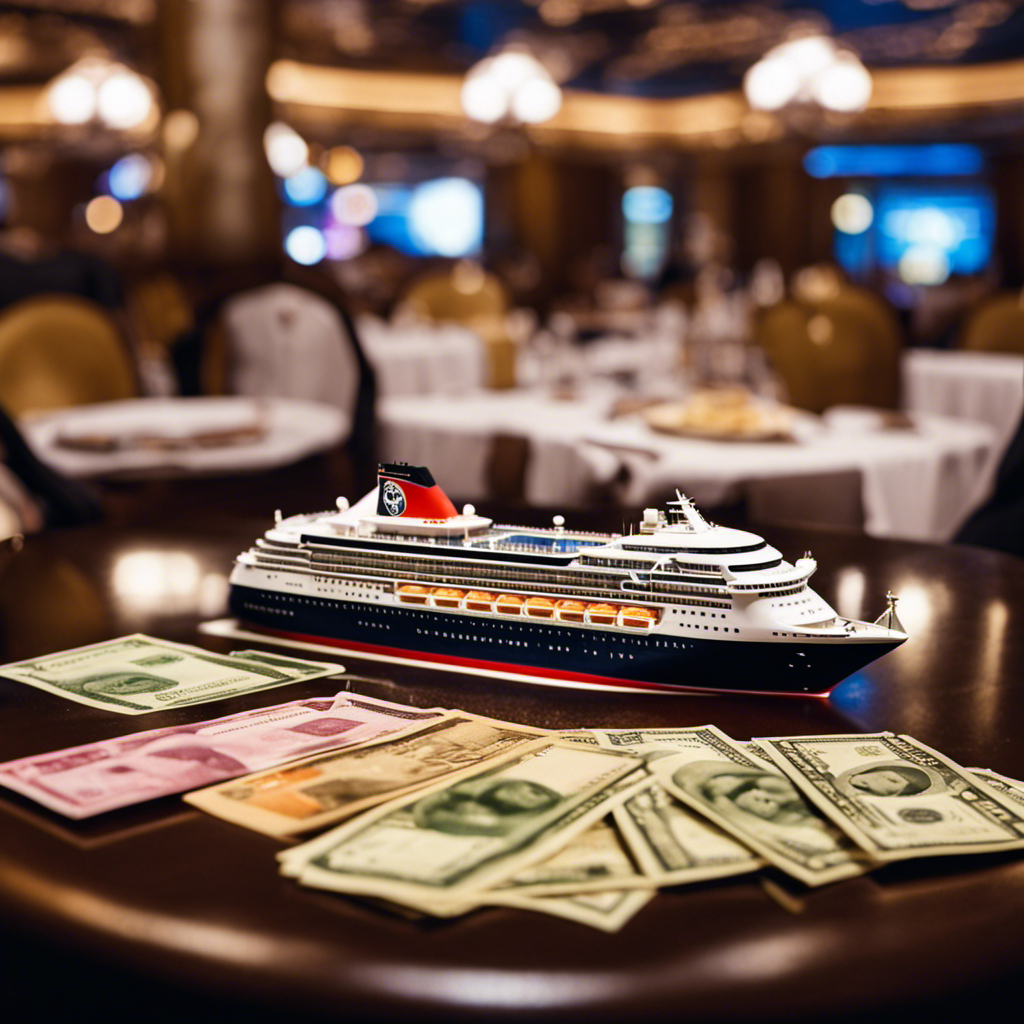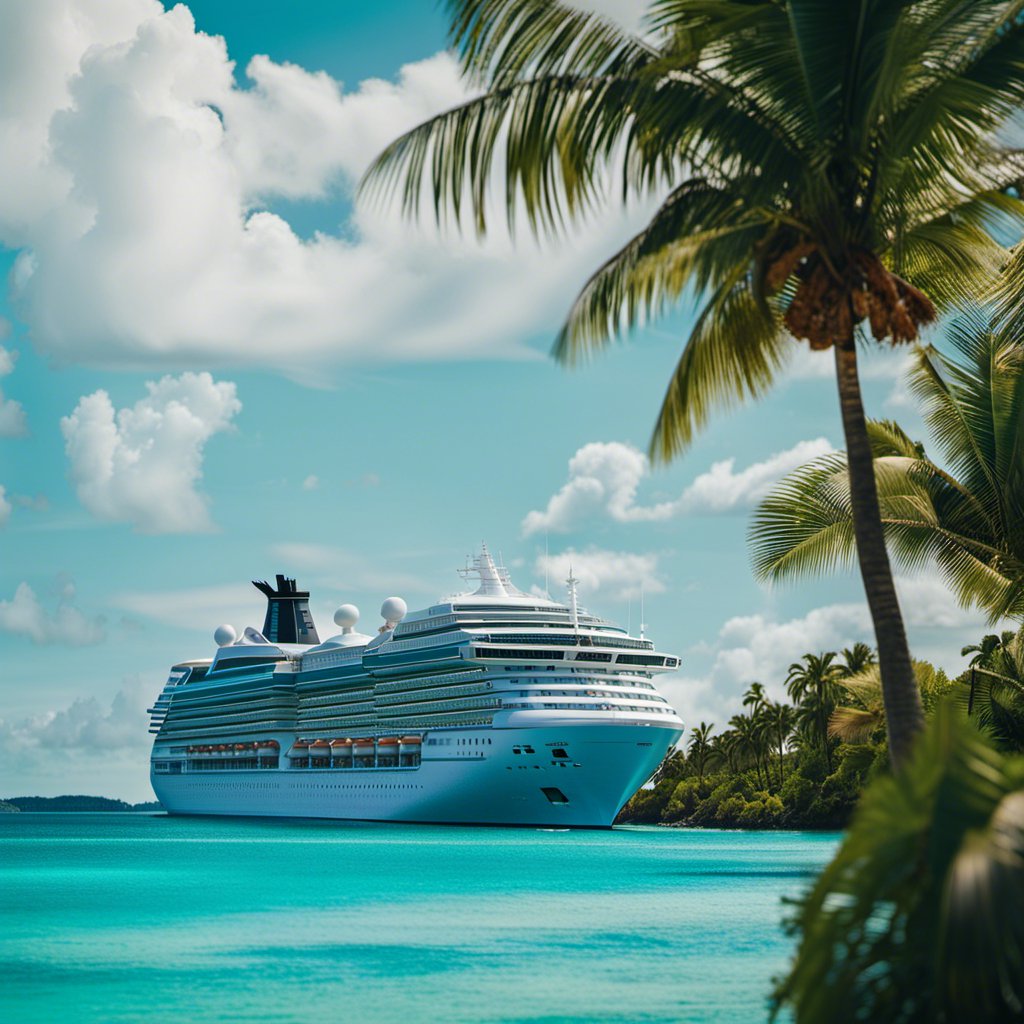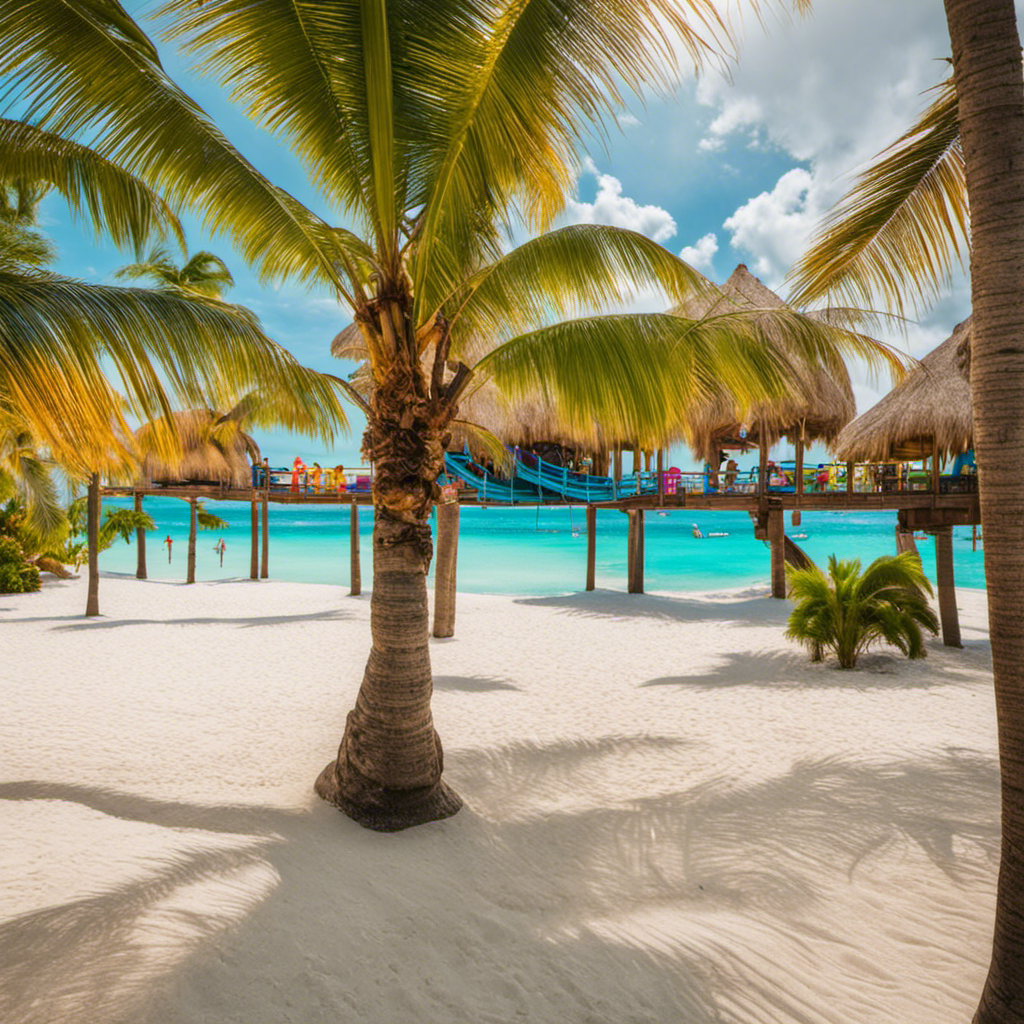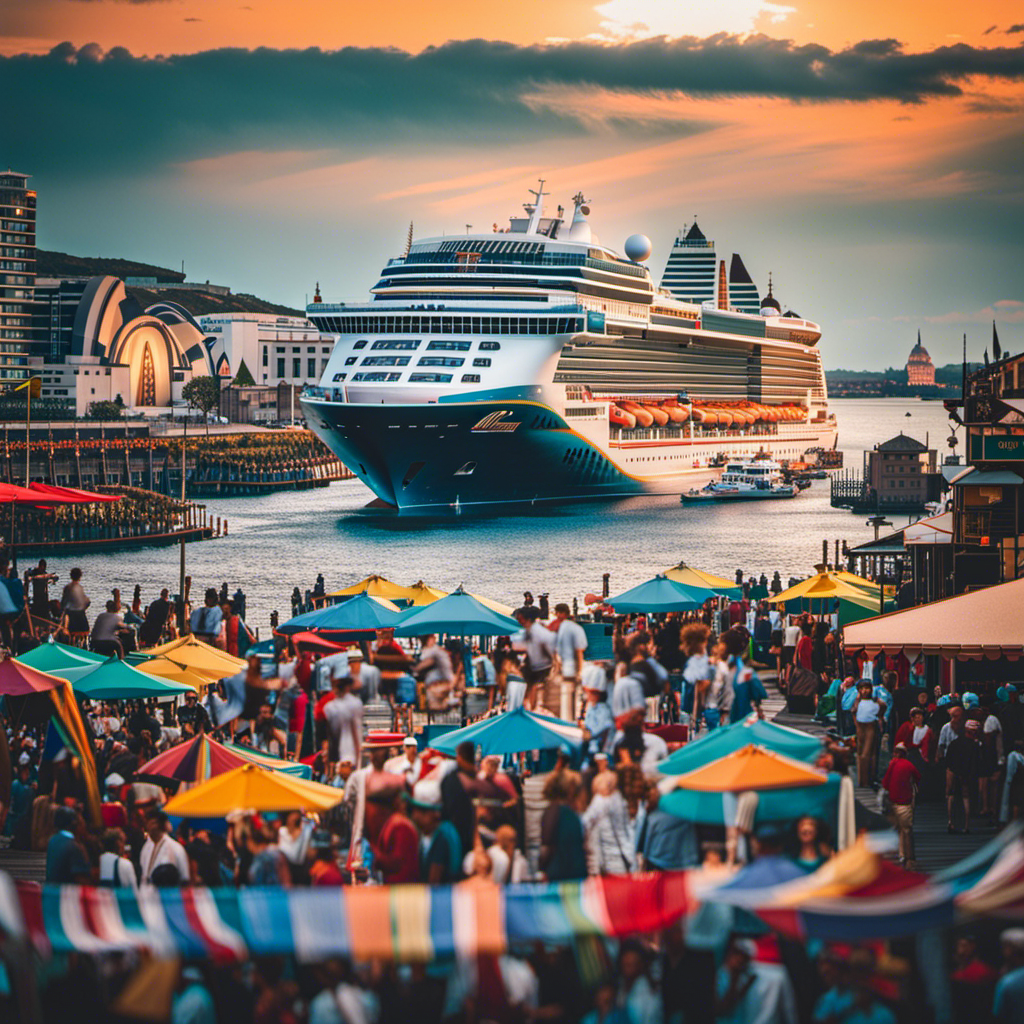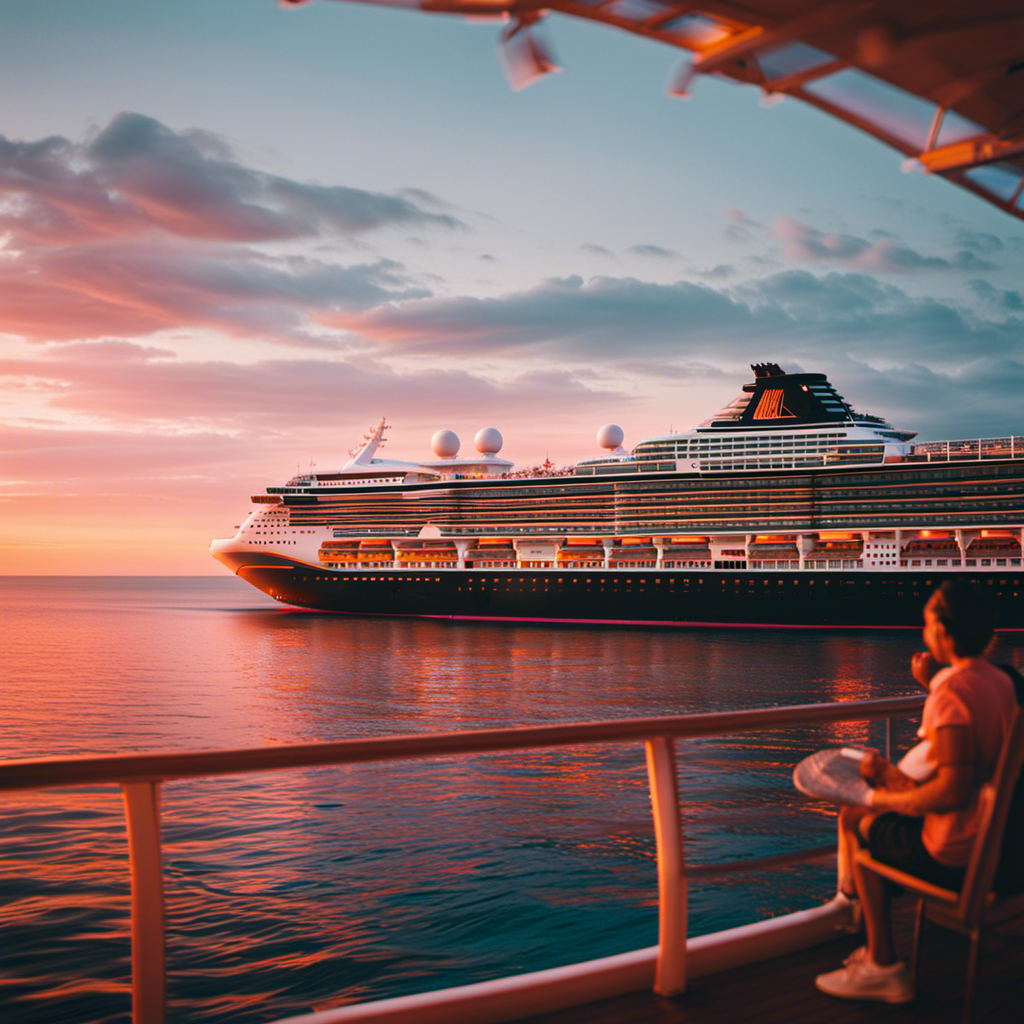As someone who has traveled extensively, I’ve always been intrigued by the mysterious world of tipping on Royal Caribbean. What’s the right amount to leave as a tip? And more importantly, who should receive these tips? Worry not, my fellow cruise lovers!
In this guide, I will demystify the intricate web of Royal Caribbean gratuities, providing you with all the necessary information about costs and proper tipping etiquette.
So, grab a cup of coffee and let’s embark on this enlightening journey together!
Key Takeaways
- Royal Caribbean charges a daily gratuity to every passenger, regardless of age, which is distributed to passenger-focused crew members.
- The gratuity rates are $16.00 per person, per day for most guest rooms and $18.50 per person, per day for guests in suites.
- Guests have the option to prepay gratuities before the cruise to avoid potential rate increases and eliminate extra charges on the ship.
- While the gratuity amount is typically automatic and not easily changed, reductions may be reasonable for poor service or major issues, which can be discussed at Guest Services.
Understanding the Daily Gratuities Charge
I have learned that the daily gratuity charge on Royal Caribbean cruises is automatically applied to my account and distributed to passenger-focused crew members. This automatic charge is a convenient way to ensure that the hardworking staff who cater to our needs are properly compensated.
The pros of this system include the ease of not having to worry about carrying cash or calculating tips. It also guarantees that all crew members, from dining staff to room stewards, receive their fair share.
However, there are some cons to consider as well. Some passengers may prefer to have more control over their gratuities and choose to tip individually. Additionally, it is important to understand that a portion of the gratuity charge is not distributed to all crew members, but rather to those who directly serve passengers.
Overall, understanding the distribution of gratuities helps us appreciate the hard work of the crew members who make our cruise experience enjoyable.
Who Must Pay Gratuities on Royal Caribbean?
Passengers of all ages are required to pay gratuities on Royal Caribbean cruises. There are no gratuity exemptions or age limits for tipping on Royal Caribbean. Unlike other cruise lines that may have special circumstances for younger passengers, Royal Caribbean applies gratuities to all passengers, regardless of age. This means that even children and infants are required to pay the daily gratuity charge.
It’s important to note that the gratuity amount is the same for all passengers, regardless of their age. So whether you’re a child, a teenager, or an adult, you will be subject to the same gratuity charges. This policy ensures that the hardworking crew members who provide excellent service to all guests are fairly compensated for their efforts.
Breaking Down the Costs: How Much Are Gratuities?
Breaking down the costs, the gratuity amount on Royal Caribbean cruises varies depending on the length of the cruise and the type of guest room. Here is a breakdown of the gratuities on Royal Caribbean:
- For most guest rooms, the daily gratuity charge is $16.00 per person, per day.
- Guests staying in suites are charged $18.50 per person, per day.
The rates also vary based on the length of the cruise. For example, a 7-day cruise in a balcony cabin would result in a gratuity charge of $112.00 per person. Couples on a weeklong cruise in a balcony cabin would be charged $224 in gratuities.
It’s important to note that these gratuity charges are separate from the 18% automatic gratuity charged at specialty restaurants, bars, and spas.
These tipping guidelines provide a helpful framework for passengers to plan their budgets and ensure that the hardworking crew members are rewarded for their exceptional service.
Payment Options: How to Pay Gratuities
Paying gratuities on Royal Caribbean cruises can be done through various methods. One option is to prepay before the cruise, which has its advantages. Prepaying allows you to budget your expenses in advance and avoid potential rate increases. You can easily prepay online or by calling Royal Caribbean.
On the other hand, if you choose not to prepay, gratuities will be automatically added to your account at the end of the sailing. This eliminates the need for additional payments on the ship. However, if you prefer alternative payment methods, you can discuss specific gratuity refunds or changes at Guest Services until the morning of departure.
It’s important to note that the 18% automatic gratuity charged at bars and spas cannot be changed.
Can I Change the Amount Paid? Dealing With Service Issues
Dealing with service issues on a Royal Caribbean cruise can be frustrating if the gratuity amount is automatic and not easily changed. However, there are options available to address these concerns.
Here are some steps you can take:
-
Visit Guest Services: If you’re unhappy with the service, go to Guest Services and explain the situation. They may be able to assist you in reducing the gratuity amount based on the poor service received.
-
Request a Refund: If the service issues were significant and impacted your overall experience, you can discuss the possibility of receiving a refund for specific gratuities with Guest Services.
-
Act before departure: Make any changes to gratuity amounts before the morning of departure. After that, the automatic gratuity charges will be final.
-
Be aware of restaurant and spa gratuities: Keep in mind that the 18% automatic gratuity charged at specialty restaurants, bars, and spas cannot be changed.
-
Express your concerns: It is important to communicate your dissatisfaction with the service to ensure that your concerns are heard and addressed.
Navigating Gratuities Etiquette on Royal Caribbean
When it comes to navigating gratuities etiquette on Royal Caribbean, there are a few alternatives to consider.
While the daily gratuity charge is automatically added to your account, you can choose to prepay it before your cruise to avoid rate increases and extra charges on the ship. However, if you’re not satisfied with the service, you may be able to make a reduction at Guest Services until the morning of departure.
It’s important to understand the impact of gratuities on the salaries of the hardworking crew members. These gratuities play a significant role in their earnings, as they are distributed among the passenger-focused crew, such as dining staff and room stewards. By tipping, you are directly contributing to their livelihood.
Additionally, it is worth noting that the 18% automatic gratuity charged at specialty restaurants, bars, and spas cannot be changed.
To summarize, tipping alternatives on Royal Caribbean include prepaying gratuities and requesting reductions for poor service. Remember, gratuities have a meaningful impact on the salaries of the dedicated crew members who strive to make your cruise experience enjoyable.
Frequently Asked Questions
Are Gratuities on Royal Caribbean Mandatory?
Yes, gratuities on Royal Caribbean are mandatory and not included in the overall cruise price. While the amount of gratuity paid can typically be adjusted for poor service or major issues, changes are limited.
Can I Choose Not to Pay Gratuities on Royal Caribbean?
Opting out of paying gratuities on Royal Caribbean can have financial implications. While it may be possible to change the amount paid for poor service, the automatic charges are generally mandatory.
How Are Gratuities Distributed Among the Crew Members?
Gratuities on Royal Caribbean are distributed among crew members based on their roles and responsibilities. The specific allocation process is determined by the cruise line, ensuring that the gratuities are fairly distributed to the passenger-focused crew who provide exceptional service throughout the cruise.
Are There Any Exceptions to the Daily Gratuity Charge?
There are no exceptions or alternatives to the daily gratuity charge on Royal Caribbean cruises. Every passenger, regardless of age or circumstances, is required to pay the automatic gratuity.
Are Gratuities Included in the Price of Specialty Restaurant Meals, Drinks, and Spa Services?
Gratuities are not included in the price of specialty restaurant meals, drinks, and spa services on Royal Caribbean. These services have an automatic 18% gratuity charge, separate from the daily gratuity charge applied to your account.
Meet Asra, a talented and adventurous writer who infuses her passion for exploration into every word she writes. Asra’s love for storytelling and her insatiable curiosity about the world make her an invaluable asset to the Voyager Info team.
From a young age, Asra was drawn to the power of words and their ability to transport readers to far-off lands and magical realms. Her fascination with travel and cultures from around the globe fueled her desire to become a travel writer, and she set out on a journey to turn her dreams into reality.

